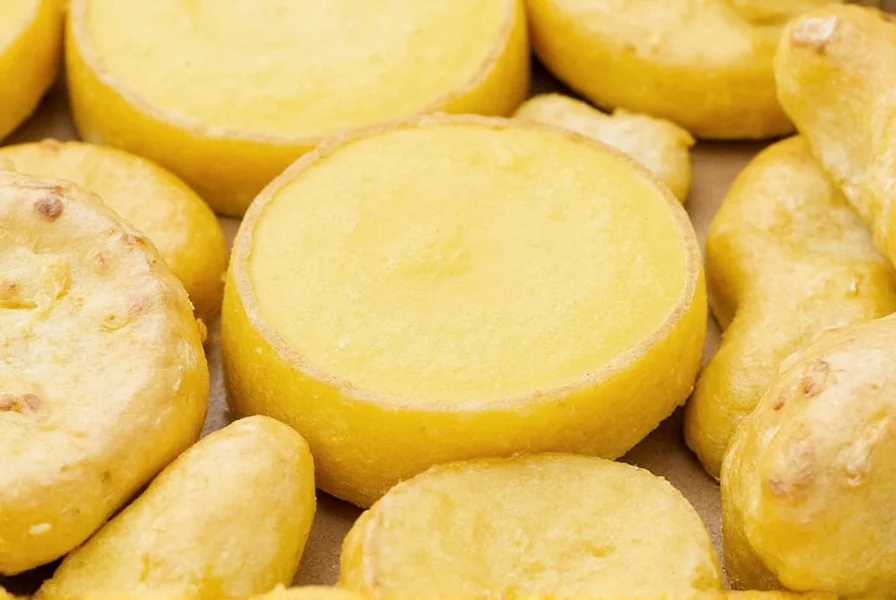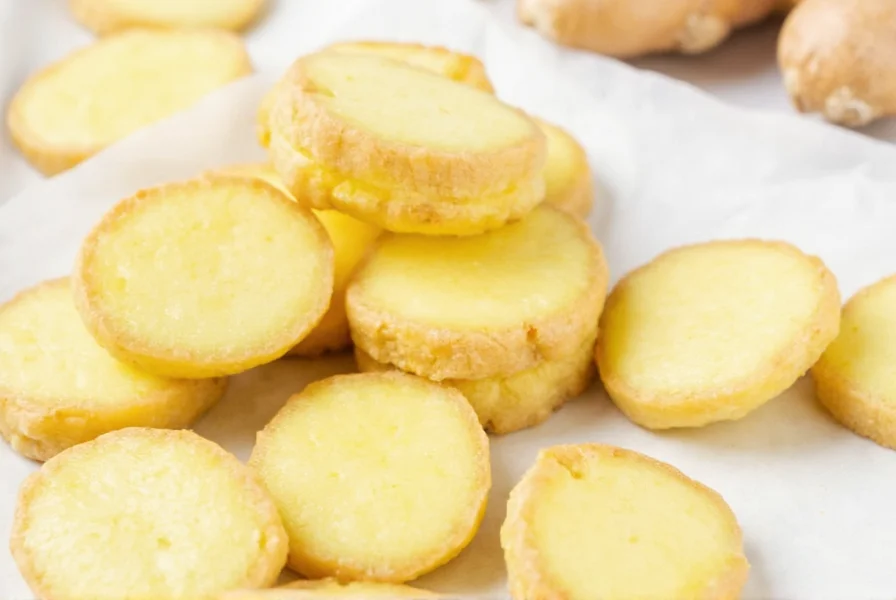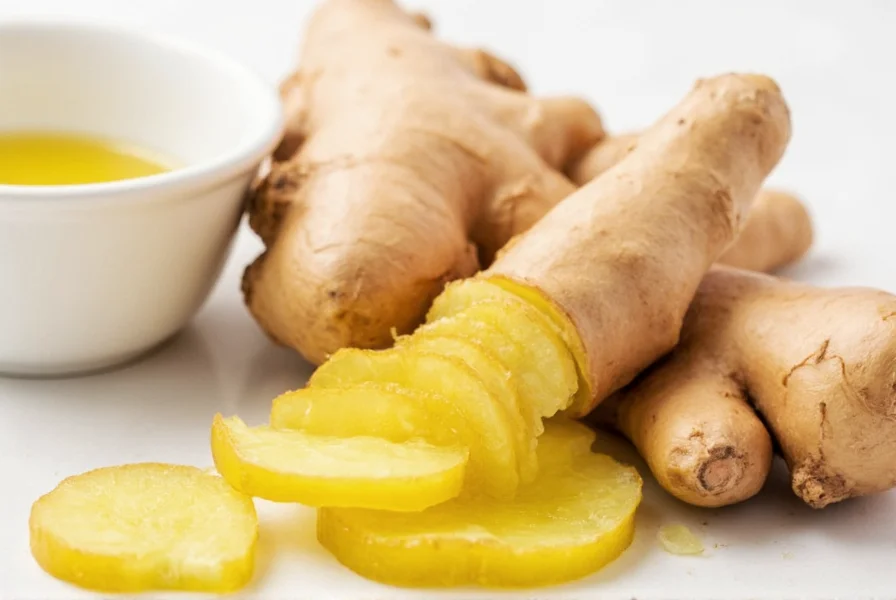For those seeking natural approaches to managing inflammation, ginger has emerged as a promising option backed by scientific research. This ancient spice contains potent bioactive compounds, particularly gingerols and shogaols, which have demonstrated significant anti-inflammatory properties in numerous studies. Understanding the appropriate daily intake is crucial for maximizing benefits while ensuring safety.
Scientific Evidence Behind Ginger's Anti-Inflammatory Properties
Multiple clinical trials have investigated ginger's effectiveness against inflammation. A comprehensive 2022 review published in Nutrients analyzed 30 randomized controlled trials involving over 2,500 participants. The research consistently showed that ginger supplementation significantly reduced inflammatory markers including C-reactive protein (CRP) and interleukin-6 (IL-6).
One notable study from the University of Georgia followed 60 adults with osteoarthritis. Participants taking 1 gram of ginger extract daily for 12 weeks reported 35% less pain and 28% improved mobility compared to the placebo group. The anti-inflammatory mechanism works by inhibiting cyclooxygenase (COX) and lipoxygenase (LOX) pathways—similar to how non-steroidal anti-inflammatory drugs (NSAIDs) function, but with fewer gastrointestinal side effects.
Recommended Daily Ginger Dosage for Inflammation
The optimal ginger intake depends on several factors including the form consumed, individual health conditions, and specific inflammation concerns. Here's a detailed breakdown of evidence-based recommendations:
| Ginger Form | Daily Dosage for Inflammation | Frequency | Notes |
|---|---|---|---|
| Raw/Fresh Ginger | 1-3 grams (⅓ to 1 inch root) | Once or divided doses | Peel and slice or grate; contains 3-6% gingerols |
| Dried Ginger Powder | 250-500 mg | 2-3 times daily | Standardized to 5% gingerols; more concentrated than fresh |
| Ginger Extract/Capsules | 250-1000 mg | Once or twice daily | Look for standardized 20% gingerols; most studied form |
| Ginger Tea | 2-4 grams in 8 oz water | 2-3 times daily | Steep fresh or dried ginger 10-15 minutes for maximum extraction |
Factors Influencing Optimal Ginger Intake
Several variables affect how much ginger you should consume daily for inflammation management:
Health Condition Severity
Those with chronic inflammatory conditions like rheumatoid arthritis may benefit from higher doses (up to 2 grams of extract daily) during flare-ups, while maintenance doses might be lower. Acute inflammation may require shorter-term, higher-dose protocols.
Ginger Quality and Potency
The gingerol content varies significantly based on growing conditions, storage, and processing. Fresh ginger typically contains 3-6% gingerols by weight, while dried powder concentrates these compounds. Standardized extracts provide the most consistent dosing for inflammation relief.
Individual Tolerance
Begin with lower doses (250 mg of extract or ½ inch fresh ginger) to assess tolerance. Gradually increase over 1-2 weeks to your target dosage. Some people experience mild gastrointestinal effects at higher doses.
Safety Considerations and Potential Side Effects
Ginger is generally recognized as safe by the FDA, but certain precautions apply when using it for inflammation management:
Maximum Safe Daily Intake
Most health authorities recommend not exceeding 4 grams of ginger daily from all sources. The European Medicines Agency suggests a maximum of 1 gram of dried ginger per day for therapeutic use. Higher doses may cause:
- Mild heartburn or stomach upset
- Diarrhea in sensitive individuals
- Increased bleeding risk at very high doses
Medication Interactions
Ginger may interact with certain medications, particularly:
- Blood thinners (warfarin, aspirin) - ginger has mild anticoagulant properties
- Diabetes medications - may enhance blood sugar lowering effects
- High blood pressure medications - may potentiate effects
If you take any prescription medications, consult your healthcare provider before starting regular ginger supplementation for inflammation.
Contraindications
Avoid therapeutic ginger doses if you have:
- Gallstone disease (ginger may increase bile production)
- Upcoming surgery (discontinue 2 weeks prior due to bleeding risk)
- Pregnancy beyond first trimester (high doses may affect fetal development)

Practical Ways to Incorporate Ginger Into Your Daily Routine
Finding the right daily ginger dosage for inflammation becomes easier when you integrate it into your existing habits:
Morning Ginger Elixir
Start your day with ½ inch fresh ginger (about 2 grams) grated into hot water with lemon. This provides approximately 75 mg of gingerols—ideal for morning stiffness relief.
Ginger in Cooking
Add 1-2 teaspoons of grated ginger to stir-fries, soups, or smoothies. One tablespoon of fresh ginger contains approximately 6 grams, so moderate your portions based on your target daily intake for inflammation management.
Standardized Supplements
For precise daily ginger dosage for inflammation, consider standardized extracts providing 250-500 mg of gingerols twice daily. Look for products tested by third-party organizations like USP or NSF.

When to Consult a Healthcare Professional
While ginger offers promising natural support for inflammation, certain situations require professional medical guidance:
- If inflammation persists despite consistent ginger use for 8-12 weeks
- When managing autoimmune conditions like rheumatoid arthritis
- If you experience any adverse reactions to ginger consumption
- Before combining ginger with prescription anti-inflammatory medications
A registered dietitian or integrative medicine specialist can help determine the optimal ginger intake for your specific inflammatory condition while considering your complete health profile.
Conclusion: Finding Your Personal Ginger Sweet Spot
The ideal daily ginger dosage for inflammation relief typically falls between 1-2 grams of raw ginger or 250-500 mg of standardized extract taken consistently. Research suggests that regular consumption over 4-8 weeks yields the most significant anti-inflammatory benefits. Start with lower doses to assess tolerance, gradually increasing to your target amount while monitoring your body's response.
Remember that ginger works best as part of a comprehensive anti-inflammatory approach that includes a balanced diet rich in omega-3s, regular exercise, and stress management techniques. For personalized guidance on ginger supplementation for your specific inflammatory condition, consult with a healthcare provider knowledgeable in integrative approaches to inflammation management.
Frequently Asked Questions
Can I take ginger every day for inflammation?
Yes, ginger can be safely consumed daily for inflammation management within recommended limits. Most studies showing anti-inflammatory benefits used daily doses of 1-2 grams of ginger for 8-12 weeks. However, if you have specific health conditions or take medications, consult your healthcare provider before starting daily ginger supplementation.
How long does it take for ginger to reduce inflammation?
Most clinical studies show measurable reductions in inflammatory markers after 4-6 weeks of consistent daily ginger consumption. Some people report symptom relief within 2-3 weeks, while chronic inflammatory conditions may require 8-12 weeks of regular use. The anti-inflammatory compounds in ginger work cumulatively, so consistent daily intake at appropriate doses is key for optimal results.
Is fresh ginger better than supplements for inflammation?
Both forms can be effective, but they offer different advantages. Fresh ginger contains the full spectrum of natural compounds but has variable potency. Standardized supplements provide consistent gingerol content (typically 20-25%), making dosing more precise for inflammation management. Research shows similar efficacy when equivalent gingerol amounts are consumed, so choose the form that best fits your lifestyle and ensures consistent daily intake.
What's the maximum safe amount of ginger for inflammation?
The generally accepted maximum safe daily intake of ginger is 4 grams from all sources. However, for therapeutic anti-inflammatory effects, most research uses 1-2 grams daily. The European Medicines Agency recommends not exceeding 1 gram of dried ginger per day for medicinal purposes. Higher doses may cause gastrointestinal discomfort and increase bleeding risk, especially when combined with blood-thinning medications.
Can I take ginger with NSAIDs for inflammation?
While ginger has a different mechanism of action than NSAIDs and may complement their effects, consult your healthcare provider before combining them. Ginger has mild blood-thinning properties that could potentially increase the risk of bleeding when combined with NSAIDs like ibuprofen or aspirin. Your doctor can help determine if this combination is appropriate for your specific situation and may adjust dosages accordingly.











 浙公网安备
33010002000092号
浙公网安备
33010002000092号 浙B2-20120091-4
浙B2-20120091-4